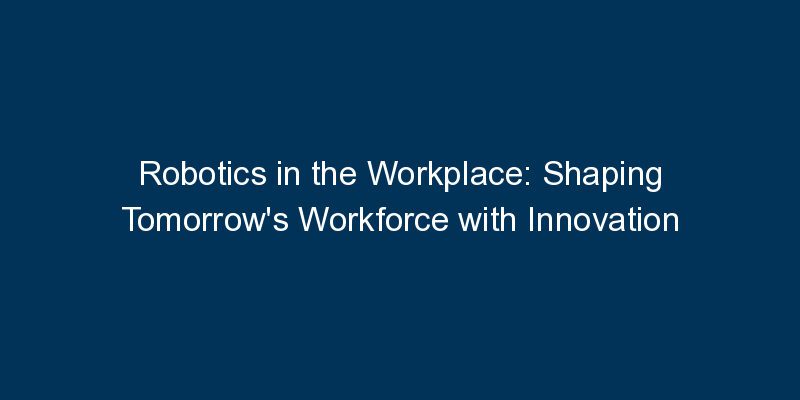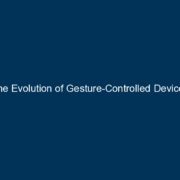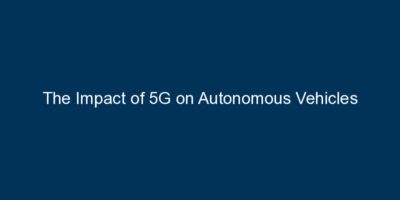Introduction
The integration of robotics into the workplace represents a transformative shift in how industries operate. In this blog, we delve into the current applications of robotics in various sectors, examining the impact on productivity, efficiency, and the future prospects that these technological advancements hold.
Robotics Defined: A New Frontier in Workforce Dynamics
Defining Robotics in the Workplace
Robotics in the workplace involves the use of automated systems and machines to perform tasks traditionally carried out by humans. These robotic technologies encompass a wide range of applications, from routine and repetitive tasks to complex and intricate operations.
The Evolution of Workplace Robotics
The journey of workplace robotics has evolved from simple industrial robots to sophisticated and intelligent machines. The integration of artificial intelligence (AI) and advanced sensors has empowered robots to adapt and perform tasks with increasing autonomy.
Current Applications of Robotics in Different Sectors
Manufacturing and Assembly Lines
One of the primary domains of workplace robotics is manufacturing and assembly. Robots excel in tasks that require precision, speed, and repetition, enhancing efficiency and minimizing errors in production processes.
Healthcare Assistance and Surgery
In the healthcare sector, robotics plays a crucial role in surgery assistance, rehabilitation, and patient care. Surgical robots, for instance, offer precision and minimally invasive procedures, leading to faster recovery times.
Logistics and Warehousing
Automated guided vehicles (AGVs) and robotic arms streamline logistics and warehousing operations. Robots can efficiently manage inventory, pick and pack items, and navigate through warehouses, optimizing supply chain processes.
Transformative Trends Shaping the Future
Collaborative Robots (Cobots)
The rise of collaborative robots, or cobots, introduces a new paradigm where humans and robots work together seamlessly. Cobots are designed to interact safely with human workers, enhancing productivity and versatility.
Robotic Process Automation (RPA) in Business Processes
RPA involves the use of software robots to automate routine and rule-based business processes. This trend is revolutionizing administrative tasks, data entry, and customer service, freeing human workers for more complex responsibilities.
Artificial Intelligence and Machine Learning Integration
The integration of AI and machine learning into robotics enables machines to learn and adapt to dynamic environments. This trend opens avenues for robots to perform tasks that require decision-making, pattern recognition, and problem-solving.
Challenges and Considerations
Workforce Adaptation and Skills Enhancement
As robotics becomes more prevalent, there is a need for the workforce to adapt and acquire new skills. Training programs and educational initiatives are essential to ensure a smooth transition and harness the benefits of robotics.
Ethical and Safety Concerns
Addressing ethical considerations and ensuring the safety of workers in the presence of robots is paramount. Striking a balance between automation and human intervention is crucial to maintain a safe and ethical working environment.
Future Prospects: Navigating the Robotic Revolution
Expanding Applications in Service Industries
The future holds the promise of expanding robotics into service industries such as hospitality, retail, and customer service. Robots may take on roles like customer assistance, inventory management, and even concierge services.
Human-Robot Collaboration Redefining Work Dynamics
The collaboration between humans and robots is expected to redefine work dynamics. Instead of replacing jobs, robots are likely to augment human capabilities, leading to more fulfilling and specialized roles for workers.
Conclusion
The incorporation of robotics into the workplace is a journey marked by innovation, efficiency, and the potential for redefining the nature of work itself. As we navigate the evolving landscape of workplace robotics, it is imperative to address challenges, ensure ethical practices, and embrace the transformative power of these technologies.
The future of workplace robotics holds exciting possibilities, where machines and humans collaborate synergistically to achieve unprecedented levels of productivity and innovation. By fostering a mindset of adaptability, continuous learning, and responsible integration, industries can navigate the robotic revolution and shape a future where technology enhances, rather than replaces, the workforce.



















Comments